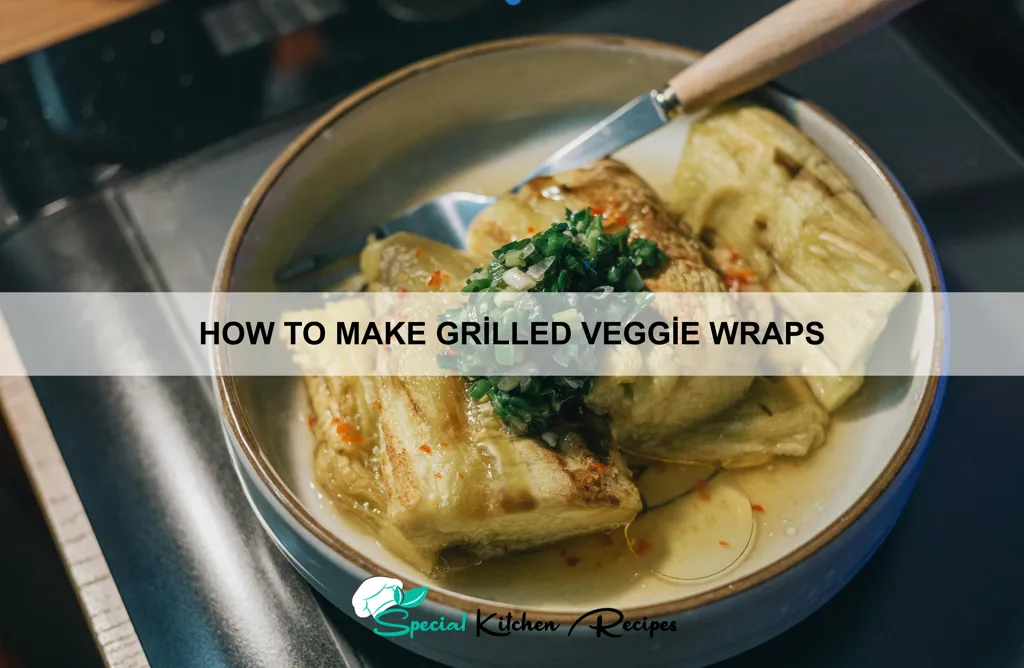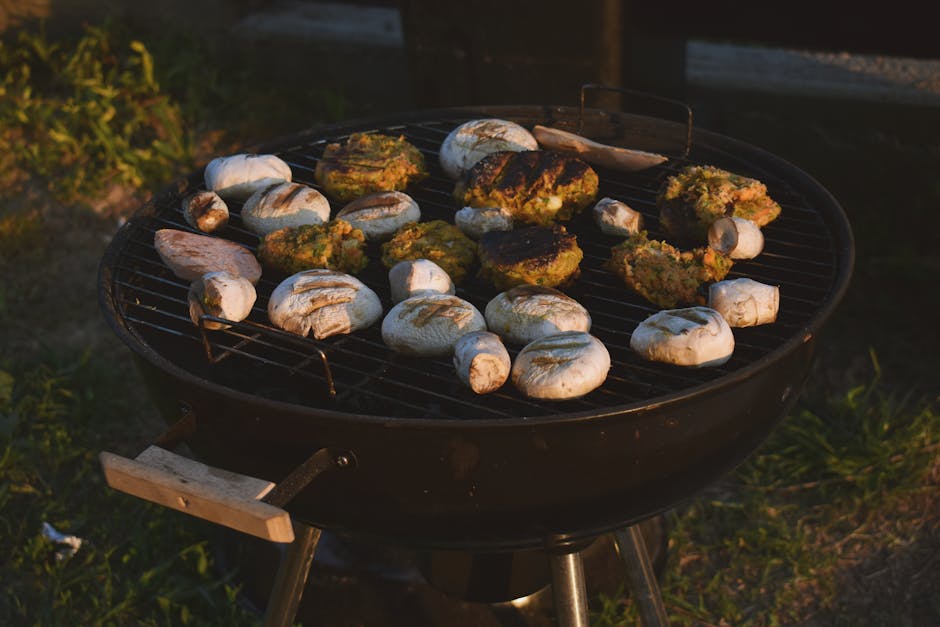Grilled veggie wraps, a vibrant and healthy culinary creation, don’t boast a singular, pinpointed origin like, say, pizza. Instead, their story is a delicious tapestry woven from various global cuisines. The concept of wrapping fillings in flatbreads is ancient, with evidence suggesting practices dating back millennia across cultures. From the Mexican burrito to the Vietnamese bánh mì, the art of the wrap has evolved into countless regional variations. The grilled vegetable component, however, reflects a modern emphasis on fresh, flavorful ingredients and healthy eating habits. The rise in popularity of vegetarian and vegan diets in recent decades has significantly contributed to the surge in grilled veggie wrap recipes, highlighting the versatility and adaptability of this simple yet satisfying meal.
The historical significance of grilled veggie wraps lies not in a specific historical event but rather in the ongoing evolution of global food trends. Statistics show a significant increase in the consumption of vegetables globally, driven by growing awareness of the health benefits of plant-based diets. This shift has naturally fueled the creativity of chefs and home cooks alike, resulting in innovative and delicious ways to incorporate vegetables into meals. The grilled veggie wrap perfectly embodies this trend, offering a convenient, portable, and customizable option for those seeking a nutritious and flavorful meal. Interestingly, the wrap format itself contributes to its popularity, offering a fun and interactive dining experience, appealing to both children and adults.
Culturally, grilled veggie wraps represent a confluence of various culinary traditions. The use of flatbreads is universal, found in almost every corner of the world, showcasing the fundamental human need for convenient and portable food. The choice of vegetables varies widely depending on regional availability and preferences, reflecting the diversity of global cuisines. One might find Mediterranean-inspired wraps featuring zucchini, eggplant, and peppers, while others might incorporate Asian-inspired vegetables like mushrooms, bell peppers, and bok choy. This adaptability underscores the cultural significance of the grilled veggie wrap; it’s a blank canvas onto which diverse culinary traditions can be painted, creating a unique and personalized culinary experience.
Ingredients and Measurements
This recipe yields approximately 4 large grilled veggie wraps. Feel free to adjust quantities based on your needs and the size of your tortillas.
Vegetables: The beauty of this recipe lies in its versatility. You can substitute your favorite vegetables. However, for optimal flavor and texture, we recommend the following quantities:
- 1 medium Zucchini, sliced lengthwise into 1/4-inch thick strips (approximately 2 cups sliced)
- 1 medium Bell Pepper (any color), thinly sliced (approximately 1 cup sliced)
- 1 medium Red Onion, thinly sliced (approximately 1/2 cup sliced)
- 1 cup Cherry Tomatoes, halved
- 1 cup Mushrooms, sliced (cremini or button work well)
Marinade: A flavorful marinade is key to tender and delicious grilled vegetables. This recipe uses a simple yet effective blend:
- 2 tablespoons Olive Oil – Use a good quality extra virgin olive oil for the best flavor.
- 1 tablespoon Balsamic Vinegar – Adds a tangy sweetness.
- 1 teaspoon Dried Oregano – For an earthy, Mediterranean touch. Fresh oregano can be substituted (use about 1 tablespoon).
- 1 teaspoon Garlic Powder – Adds a savory depth of flavor.
- 1/2 teaspoon Salt – Adjust to your taste.
- 1/4 teaspoon Black Pepper – Freshly ground black pepper is preferred.
Wraps & Extras:
- 4 large Flour Tortillas (burrito size) – Choose tortillas that are sturdy enough to hold the fillings without tearing.
- 1/2 cup crumbled Feta Cheese (optional) – Adds a salty, tangy element.
- 1/4 cup Hummus (optional) – Provides a creamy, healthy spread.
- Fresh herbs for garnish (optional) – Cilantro, parsley, or basil add a fresh, vibrant touch.
Important Note: Always wash your vegetables thoroughly before slicing and preparing them. Adjust the quantities of each ingredient based on your preferences and the number of servings you are making. Don’t be afraid to experiment with different vegetables and add-ins to create your own unique grilled veggie wrap!
Vegetable Preparation
The success of your grilled veggie wraps hinges on perfectly prepared vegetables. We’ll be using a vibrant mix of colors and textures, so let’s get started!
Bell Peppers (1 large red, 1 large yellow, 1 large orange): Begin by washing the bell peppers thoroughly. Remove the stems and seeds, then slice each pepper into roughly 1/2-inch wide strips. Avoid slicing them too thinly, as they’ll become overly soft on the grill. Larger pieces retain better texture.
Zucchini & Yellow Squash (2 medium each): Wash the zucchini and yellow squash and trim the ends. Slice them lengthwise into 1/4-inch thick half-moons. Aim for consistent thickness to ensure even grilling. If you have particularly large squash, consider halving them lengthwise before slicing to achieve a manageable size.
Red Onion (1 medium): Peel the red onion and slice it into 1/4-inch thick wedges. Soaking the sliced onion in cold water for 10-15 minutes before grilling will help to mellow its sharpness and reduce any potential bitterness. Drain well before grilling.
Cherry Tomatoes (1 pint): Wash the cherry tomatoes and leave them whole. No need to cut these; their small size and natural burst of flavor adds a delightful contrast to the other vegetables. Consider using a mix of colors for an even more visually appealing wrap.
Mushrooms (8 oz cremini or button): Clean the mushrooms with a damp cloth or mushroom brush, avoiding washing them under running water which can make them soggy. If using large mushrooms, slice them in half or quarters. Smaller mushrooms can be left whole. Larger mushroom pieces will need slightly longer on the grill.
Optional additions: Feel free to experiment with other vegetables! Asparagus spears, sliced eggplant, or even corn on the cob (cut into 2-inch pieces) would all be delicious additions. Remember to adjust grilling times depending on the vegetable you choose. Always pre-chop vegetables to the appropriate size before beginning to grill. This ensures consistent cooking and prevents any delays while the grill is hot.
Pro-Tip: Toss all the prepared vegetables (except the tomatoes) lightly with 2 tablespoons of olive oil, 1 teaspoon of salt, and 1/2 teaspoon of black pepper. This will help them to caramelize beautifully on the grill and enhance their flavor.
Marinade (if using)
While grilling vegetables directly is delicious, marinating them beforehand adds incredible depth of flavor and helps them retain moisture during the cooking process. This is especially beneficial for heartier vegetables like zucchini and bell peppers which can sometimes become dry on the grill. A good marinade should balance acidity, oil, and aromatics.
Here’s a versatile marinade recipe that works well with a variety of vegetables: For this recipe, you’ll need about 1 cup of marinade, enough to generously coat 1 pound of chopped vegetables. Adjust the quantities proportionally if you’re using more or fewer vegetables.
Ingredients:
- 1/4 cup extra virgin olive oil: Provides richness and helps prevent sticking.
- 2 tablespoons balsamic vinegar: Adds acidity and a tangy sweetness. You can substitute red wine vinegar or apple cider vinegar for a different flavor profile.
- 1 tablespoon lemon juice: Further enhances acidity and brightens the flavors. Freshly squeezed is best!
- 1 clove garlic, minced: Adds a pungent and savory note.
- 1 teaspoon dried oregano: A classic Mediterranean herb that pairs beautifully with grilled vegetables. Fresh oregano can be substituted (use about 2 tablespoons).
- 1/2 teaspoon dried basil: Adds another layer of herbal complexity.
- 1/4 teaspoon salt: Enhances the flavors of the vegetables.
- 1/4 teaspoon black pepper: Adds a touch of spice.
Instructions:
- In a medium bowl, whisk together the olive oil, balsamic vinegar, lemon juice, minced garlic, oregano, basil, salt, and pepper until well combined.
- Add your chopped vegetables to the bowl and toss gently to ensure they are evenly coated with the marinade. Avoid over-mixing, as this can damage the vegetables.
- Cover the bowl and refrigerate for at least 30 minutes, or up to 4 hours. Marinating for longer allows the flavors to penetrate the vegetables more deeply. However, marinating for extended periods (longer than 4 hours) can make the vegetables too soft.
- Before grilling, remove the vegetables from the marinade and discard the excess marinade. Grilling the marinade directly can cause flare-ups.
Variations: Feel free to experiment with different herbs and spices to create your own unique marinade. Consider adding a pinch of red pepper flakes for a spicy kick, or a teaspoon of Dijon mustard for a tangier flavor. You can also incorporate other flavorful ingredients such as honey or maple syrup for added sweetness.
Important Note: When using a marinade that contains raw meat or poultry, do not reuse the marinade after it has been in contact with the raw ingredients. This is crucial for food safety.
Grilling the Vegetables
Grilling vegetables brings out their natural sweetness and creates a delicious smoky char. For this recipe, we’ll be grilling bell peppers, zucchini, and red onion. The quantities below are suitable for four wraps, but you can easily adjust them based on your needs.
Preparation is key to perfectly grilled vegetables. Begin by washing all your vegetables thoroughly. Then, prepare them for grilling: Cut one large red bell pepper into 1-inch thick slices. Similarly, slice two medium zucchini lengthwise into 1/2-inch thick slices. One medium red onion should be cut into 1/2-inch thick slices. Avoid cutting them too thinly, as they might burn quickly on the grill.
Choosing the right grill is important. Gas grills offer consistent heat, making them ideal for even cooking. Charcoal grills provide a smoky flavor, but require more attention to temperature control. Regardless of your grill type, preheat it to medium-high heat (around 375-400°F or 190-200°C). Ensure your grill grates are clean to prevent sticking and ensure even grilling. Lightly oil the grates with a high-heat oil like canola or grapeseed oil to prevent sticking.
Grilling time varies depending on the vegetable and its thickness. Place the bell pepper and red onion slices directly onto the preheated grill grates. Grill for approximately 3-4 minutes per side, or until tender and slightly charred. Zucchini cooks faster, so grill for 2-3 minutes per side, until tender and slightly grill-marked. Use tongs to carefully flip the vegetables to prevent breakage and ensure even cooking.
Watch for signs of doneness. The vegetables should be tender when pierced with a fork, and exhibit nice grill marks. Avoid overcooking, as this can lead to mushy vegetables. Once cooked, remove the vegetables from the grill and place them on a plate to cool slightly. You can lightly brush them with olive oil and sprinkle with salt and pepper for extra flavor while they’re still warm.
Optional additions: Feel free to add other vegetables to the grill, such as eggplant, portobello mushrooms, or asparagus. Adjust cooking times accordingly, based on the thickness and type of vegetable.
Important Note: Always supervise the grilling process and use caution when handling hot grill grates and vegetables. Use heat-resistant gloves if needed.
Wrap Assembly
With your grilled vegetables perfectly cooked and slightly charred, it’s time to assemble your delicious veggie wraps! This stage is all about achieving a balance of flavors and textures, resulting in a satisfying and visually appealing wrap. We’ll be using large flour tortillas (10-12 inches in diameter), but you can substitute with your favorite type of wrap, such as spinach tortillas for a nutritional boost or whole wheat tortillas for a heartier option.
Layering is key to a well-balanced wrap. Start by warming your tortillas briefly. You can do this by microwaving them for 10-15 seconds, or by heating them in a dry skillet for a few seconds per side. This makes them more pliable and prevents them from cracking when you fill them.
Spread a thin layer of your chosen spread across the center of the warm tortilla. Approximately 2 tablespoons of hummus, pesto, or a creamy avocado dressing will be sufficient. Avoid overfilling, as this can make the wrap difficult to roll and prone to bursting.
Arrange your grilled vegetables on top of the spread. Aim for a balanced distribution of colors and textures. A good guideline is to use about 1 cup of the grilled vegetable mixture per wrap. Consider the order – placing heartier vegetables like zucchini and bell peppers at the base, followed by softer vegetables like onions and mushrooms, will help prevent the wrap from becoming soggy.
Add optional extras to enhance the flavor profile. A sprinkle of crumbled feta cheese (1-2 tablespoons), a handful of fresh herbs (like cilantro or basil), or a drizzle of balsamic glaze (1 teaspoon) can elevate your wrap to the next level. Remember to consider the overall flavor balance – don’t let any single ingredient overpower the rest.
Fold and roll tightly. Begin by folding the bottom edge of the tortilla over the filling, then fold in the sides, and finally, tightly roll the wrap from the bottom up, like a burrito. Ensure the filling is securely sealed to prevent leakage. You can lightly moisten the edge of the tortilla with water before rolling to help it adhere better.
Optional: Slice and serve. For easier handling and a more aesthetically pleasing presentation, you can cut the completed wraps in half diagonally. Serve immediately to enjoy the wraps at their freshest and most flavorful.
Pro Tip: If you’re making wraps ahead of time, store them in an airtight container in the refrigerator. To reheat, gently warm them in a skillet or microwave for a few seconds until heated through. Avoid over-heating, as this can make the tortillas dry and brittle.
Serving Suggestions
Your delicious grilled veggie wraps are ready! But how you serve them can elevate the experience from good to great. Here are some suggestions to maximize their flavor and presentation:
For a complete meal: Consider adding a side salad for extra freshness and nutrients. A simple green salad with a light vinaigrette, or a more substantial salad with quinoa or chickpeas, complements the warmth of the wraps perfectly. Aim for a ratio of approximately 1.5 cups of salad per wrap.
Enhance the flavors: A dollop of your favorite dipping sauce can significantly enhance the taste. A creamy cilantro-lime dressing (about 2 tablespoons per wrap), a zesty chipotle mayo (1-2 tablespoons), or even a simple hummus (2-3 tablespoons) adds a delightful contrast to the grilled vegetables. Experiment with different sauces to find your perfect match!
Presentation matters: Cut the wraps in half diagonally for easy handling and a more visually appealing presentation. Arrange them on a platter, garnished with fresh herbs like cilantro or parsley (about 1 tablespoon per wrap, chopped). A sprinkle of toasted sesame seeds or a drizzle of extra virgin olive oil adds a touch of elegance and enhances the visual appeal.
Temperature control: Serve the wraps immediately after grilling for the best flavor and texture. If you’re preparing them ahead of time, wrap them individually in foil to maintain their warmth and prevent them from drying out. Reheating in a microwave or oven is possible, but may slightly alter the texture. For optimal reheating, wrap in a damp paper towel and microwave for 30-45 seconds.
Make it a party: For a buffet or gathering, prepare a variety of fillings and let guests customize their own wraps. Offer different types of grilled vegetables, cheeses, beans, and sauces. This allows for personalized flavor combinations and caters to different dietary preferences. Provide small bowls for each ingredient to ensure easy access and maintain hygiene.
Leftovers: Store leftover wraps in an airtight container in the refrigerator for up to 3 days. They can be enjoyed cold or reheated gently. Avoid over-reheating, as this can make the tortillas soggy.
Remember, these are just suggestions; feel free to get creative and adapt them to your own preferences. Enjoy your delicious and perfectly served grilled veggie wraps!
Recommendations for Grilled Veggie Wraps
For optimal flavor and texture, grill your vegetables until they are slightly charred but still retain some firmness. Over-grilling can lead to mushy vegetables, detracting from the overall enjoyment of the wrap. Experiment with different vegetable combinations to find your perfect blend of tastes and textures. Consider adding halloumi or paneer for extra protein and a salty, satisfying element.
Serving Suggestions: These wraps are delicious on their own, but can be elevated with a variety of sides. A simple side salad with a light vinaigrette adds freshness and contrast. Alternatively, serve them with a creamy hummus or tzatziki sauce for a richer flavor profile. For a heartier meal, consider serving them alongside roasted sweet potatoes or a quinoa salad.
Storage: For best results, consume your grilled veggie wraps immediately after preparation. Leftovers can be stored in an airtight container in the refrigerator for up to 2 days. Note that the vegetables may release some moisture over time, so it’s best to consume them within 24 hours for optimal texture. Reheating is possible in a microwave or toaster oven, but be mindful not to overcook the vegetables.
Complementary Dishes: These wraps pair wonderfully with a variety of dishes. A light soup, such as a gazpacho or tomato soup, would complement the flavors nicely. For a more substantial meal, consider serving them with a side of grilled chicken or fish. A vibrant fruit salsa adds a refreshing contrast to the savory flavors of the wrap.
Nutritional Information (Approximate per wrap, based on average ingredients): Calorie count will vary depending on the specific vegetables and wrap used. A typical wrap might contain around 300-400 calories, with a good source of fiber, vitamins (A and C particularly), and minerals. This is an estimate and should not be considered precise without specific ingredient measurements. For a more accurate nutritional profile, use a nutrition calculator and input your exact ingredients and quantities.





